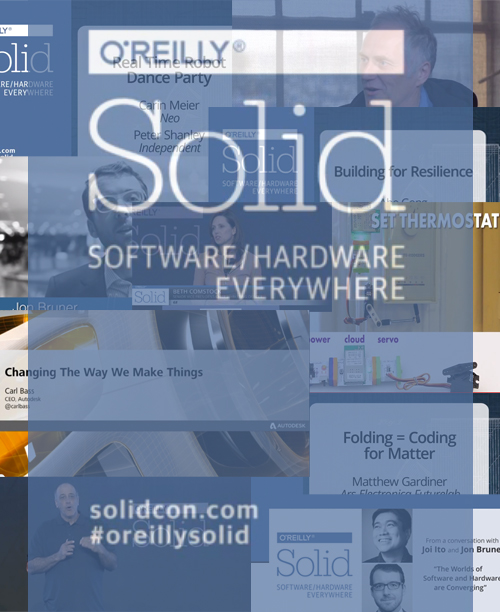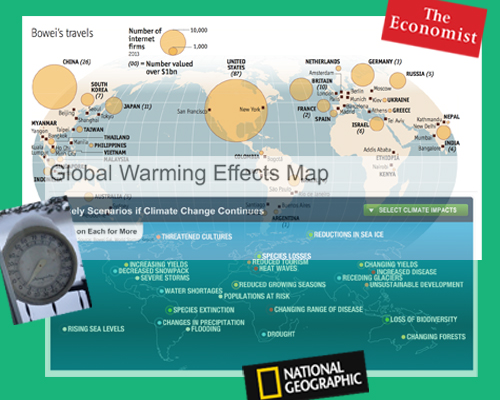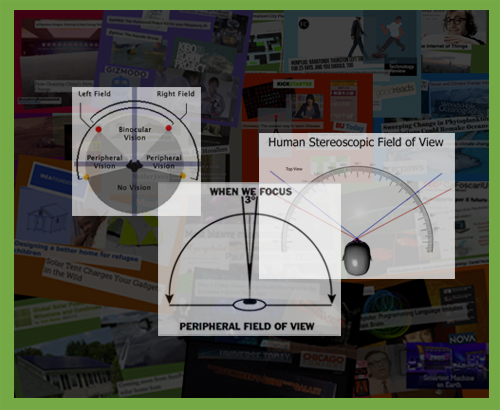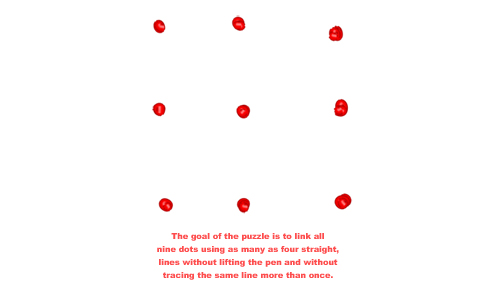| "We are at one of those huge inflection points in the industry. It’s funny—for some time everybody was thinking it is was mobile or maybe it’s wearables, but actually it’s way way bigger than that…There is the whole thread of the Maker movement—people just getting interested in the hardware, figuring out how to make stuff. And then at some point it tips over from something that people are doing in their spare time that’s cool, just for fun, and turns into ‘Whoa, that’s the next big thing.’" — Tim O’Reilly, O’Reilly Media Welcome to the latest industrial revolution: software meet hardware. It is a full out paradigm shift with big time global economic implications rooted in play, driven by informal self-organizing networks, inspired by art and powered by math. It is the poster child for STEAM—science, technology, engineering, art and math—made possible, at least in part, by kids more interested in bragging rights for clever hacks than in grades. They didn’t set out to change the world or rewrite textbooks. They just did. O’Reilly’s Solid Conference, Maker Faire’s new more serious sibling, brought a crowd of hardware bootstrappers, software developers and industry players to San Francisco last week to show off new tech and talk about what’s next. The possibilities more than a bit mind-blowing: Materials infused with information. Mashups with synthetic biology. Machines chatting with machines. And, yes, replicating the Star Trek replicator. Several dozen videos of keynotes, interviews and primers are available on Youtube.It is worth surfing through the entire playlist, but these are some I found of particular interest: ••••••••••••••••••••••• BY THE NUMBERS "It is getting progressively easier to go from a drawing on a napkin to a product on a shelf,"notes Renee DiResta of O’Reilly’s AlphaTech Ventures:
The shift from Do It Yourself to Do It With Others is another significant trend, demonstrated by the explosive growth in community hackerspaces over the last 10 years. According to DiResto, there are over 1,500 such spaces in over 100 countries, increasing at a rate of 200 per year. About a third are in the US. There is a correlation between the number of hackerspaces and digital manufacturing startups. California leads the pack with nearly 90, which helps reinforce the kind of critical mass of talent attractive to large companies such as GE that are interested developing their own internal digital manufacturing hubs. Beyond hackerspaces, there has also been an upsurge in online groups and off-line meet ups for hardware entrepreneurs. This is certainly something I have seen here Chicago where grassroots networks have gained impressive momentum over the last couple of years. Catalyze, the city’s first hardware co-working space, opened in February and almost immediately had to double in size to accommodate all the pent up demand. ••••••••••••••••••••••• THE THIRD DIGITAL REVOLUTION Neil Gershenfeld, director of MIT’s The Center for Bits and Atoms, is perhaps most widely known for his work developing Fab Labs: community workshops kitted out with open source software and off-the-shelf 3D printers, laser cutters and other tools designed as a ”technical prototyping platform for innovation and invention, providing stimulus for local entrepreneurship.” In short, a kind of startup for starting startups. Gershenfeld has also worked on machines able to build parts that could be assembled to build a copy of the parent machine. Now he has taken the same idea to the micro level, biomimicking ribosomes, the protein-making proteins found every cell, by finding ways to digitize information within materials. "…From molecules up to mountains, the insight is we’re finding that by discreetly assembling reversibly joined materials, you can get to these wild regimes you can’t get to with any other kind of fabrication process because the information is in the materials, not in the computer… …This is developing structures where there is no machine, where the material itself is shape-changing… …The end result is the Star Trek replicator. The Star Trek replicator isn’t a 3D printer. That’s a piece of plastic or maybe metal. The Star Trek replicator is coding the construction of functional materials from micro-scale on up “ ••••••••••••••••••••••• THE FUTURE OF HOW THINGS ARE MADE In his grand arcing overview of where things are headed, Carl Bass, CEO ofAutodesk, makes three points especially worth noting:
Where Gershenfeld speaks metaphorically of modeling ribosomes, Bass is interested in efforts to literally print DNA, use DNA’s properties of self-assembly to create nano-robots, and even print out bacteriophages (viruses that attack bacteria), expanding the Autodesk software suite into the medical field. "They were able to boot up a virus from a text file. They specified the DNA sequences, they made a bacteriophage, they injected it into e.coli and it attacked the e.coli… There was no breakthrough in science in doing this. Another team had done this before. What I found astounding about it is that what it took in order to do that was a smart guy like Andrew, but 14 days and a mail order account to order DNA and a $1000. The age of synthetic biology for manufacturing things is right in front of us… …I think the future is that many of the things that we make will actually be manufactured biologically.” ••••••••••••••••••••••• THE INTERNET AS MATERIAL Ayeh Bdeir, founder and CEO of littleBits, an open source library of modular electronics, also sees big potential in small things. "Part of the problem with all the technology, particularly in hardware, sitting in the hands of experts and of companies is they’re going to guess what are the needs that you have and there has to be a certain critical mass of these needs for a product to warrant existence" So she set out to make it easier for non-experts to play and prototype in hardware. "Some of society’s most transformative technologies have started in the hands of experts and then someone or something came along, democratized them and made them accessible to everyone and they really had a chance to transform society… …How do we democratize hardware? For me there are four principles:
There are dozens of modules in the littleBits library, color-coded for function and designed to pop together with magnets. Don’t let the candy colors fool you. This toy is capable of some serious play. The latest module is internet-enabled making it possible, for example, to hack together a version of the Nest thermostat, the company purchased by Google for $3.2 billion just a few months ago. It is absolutely gobsmacking how quickly a disruptive innovation can itself be disrupted. "Can we make the internet a building block? Can it become a building block that is empowering people to invent with the internet the way you would invent with light, with sound, with cardboard, with paper and really make it material?" ••••••••••••••••••••••• EVERYWHERE Of the three words in the Solid conference’s tagline—”Software / Hardware. Everywhere”—it may be the last that is the most game-changing. Software and hardware, bits and atoms, have been circling each other for some time. The technology for RFID tags has been around for over 40 years (re the “internet of cows,” see time code 5:59 in Andra Keay’s talk, "Are Robots the New Black?"). The first human “wearable” was arguably a sensor-soaked, satellite-connected smartphone, capable of tracking our every move. Smart—or at least sensor-enhanced—things are everywhere and spreading fast. By most estimates, the Internet of Things (IoT) club will include at least 50 billion members by 2020. Machines are routinely chatting with other machines (M2M), leaving us largely out of the day-to-day conversation altogether. Everywhere also refers to manufacturing. The tools to design and prototype products have become so cheap and accessible that given the talent, anyone can do it, no large company required. Autodesk has actually made its powerful cloud-based 360 software suite free for startups that haven’t made any money yet. The economics of production are shifting as well. China’s cost-cutting rise to global dominance has come at a steep cost: an environment so trashed that a 2007 World Bank report estimated air and water pollution shaved off nearly 6% of GDP. The situation has only gotten worse. An estimated one out of every five rivers are now too polluted to be of any use. Climate change has also taken a toll, contributing to a chronic water crisis in a country with 20% of the world’s population and only 7% of its surface freshwater. Predictions of rising sea levels will impact global shipping and ports scramble to adapt. Fuel costs are another concern, increasingly tipping the scale toward nearshoring (hello Mexico!) and reshoring (made—again—in the USA!). It is a sign of things to come that China’s mega-manufacturer Foxconn is now looking to expand operations in America, in part to simplify supply chain logistics. Notably, Foxconn is also investing heavily in robotics as a way to stabilize or lower labor costs, another trend driving a more globally distributed manufacturing model. ••••••••••••••••••••••• SO WHY NOT HERE? Despite an evening playing field, some parts of the US are more equal than others when it comes to the new industrial revolution. Having an established tech sector and vibrant Maker culture are definite pluses, which tilt the scales toward the coasts—a reality evident in Solid’s speaker roster. But there is a third coast emerging as a player—Chicago—and I hope the team at O’Reilly considers staging the next Solid conference here. Last February, UI Labs, a public / private / academic consortium made up of nearly 600 organizations, was awarded a $70 million grant from the Department of Defense (DoD) to create a digital lab for manufacturing. Another $250 million has been pledged from private source. Why the DoD? Manufacturing becomes a national security issue when 40,000 parts contracts fail to attract any bids as happened in 2012. Pentagon bureaucracy no doubt played a role in the lack of manufacturer enthusiasm, but US factories were also not up to task, out of date, unable to ramp up quickly for comparatively small runs. UI Labs will open its doors this fall in the city’s Goose Island industrial district and serve as a kind of national lab for manufacturing with an applied research mission. Already it has served to energize and focus the region’s considerable assets which include an estimated 14,000 factories, a deep bench in product design, engineering, architecture and biotech and a range of universities: UIC, IIT, Northwestern, DePaul, Loyola, the School of the Art Institute, the University of Chicago. At the fringe, though in its way no less important, is a strong and growing community of hardware bootstrappers along with grassroots efforts such asDesignHouse, a nonprofit startup that brings together teams of designers to develop product ideas to match the fabrication capabilities of small to mid-size manufacturers. ••••••••••••••••••••••• THEN AND NOW AND NEXT We were born to make things. In fact, we evolved to make things better. Toolmaking literally shaped our hands, something Darwin was the first to suspect. It shaped our brains, too. In a sense, it is the 10,000 hour rule writ over millennia, with accelerating change the only constant. It took hundreds of thousands of years to go from crude flints to well-crafted stone tools, but almost everything my kitchen was invented in just the last hundred years. In the last 10 years, smartphones and touchscreen tablets have changed how we learn, collaborate and communicate, providing platforms for tools and products we never knew we needed…until we had them. Software/Hardware Everywhere? I can’t wait to see what’s next. —J. A. Ginsburg / @TrackerNews RELATED • Environmental Debt: The Hidden Costs of a Changing Global Economy / Amy Larkin / Google Talk / video • When China became the world’s workshop, it inherited the world’s air pollution, too / Heather Smith / Grist |
|
0 Comments
|
BackgroundDot to Dot grew out of the TrackerNews Project, a demo news aggregator developed for InSTEDD, an independent spin-off of Google.org's humanitarian practice that focused on health issues, humanitarian response and technology. Archives
• Bats, Trees And Bureaucrats: Ebola And How Everything, Positively Everything, Connects • Scrubba Dub Carlos and the Big Bad Enterovirus: Why Sneeze When You Can Sing? • Ebola, Bats and Déjà Vu All Over Again • Scaling Good: Project Frog’s Buildings And The Kitchen Community’s Learning Gardens • Thumbs Up And High Fives: Evolution, Hands And 3D Printing • Legos, Makers, Molecules, Materials And The Very Big Business Of Small Things • Solid: When Bits and Atoms Dance • Science Hack Day Chicago 2014: Reinventing The Space Suit, Cosmic Biomicmicry And The Joy Of Thinking Different • The Motors of August Cicadas • Mulling Snow, Climate, Pain Points, Bootstrapping And Chicago’s Advantage • Glass, Tech And Civilization: The Material That Makes Just About Everything Better • A Tale Of Two Maps And Why You Can’t Teach An Old Grid New Tricks • When Bad Things Happen To Good Content: Form(At), Function, Perspective And Possibilities • The Sum Of Its Parts: Autozone Meet Autodesk (Please) / On Supply Chains, Carbon Footprints And How 3D Printing Can Change The Game (Again) • It Takes An Economist: Tallying Natural Capital • Beyond Measure: Da Vinci’s Genius, Peripheral Vision, The Prepared Mind, Metric Traps And Hacking The Filter Bubble A Solstice Encore: Imaginary Carl Sagan, A Holiday Mix Tape And The Tannahill Weavers Categories
All
|








 RSS Feed
RSS Feed







